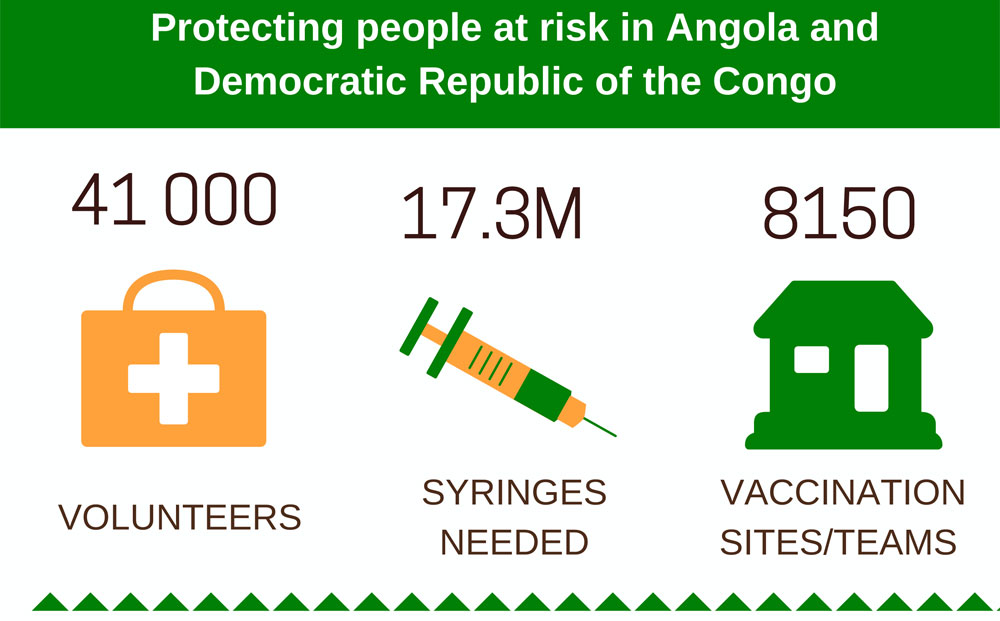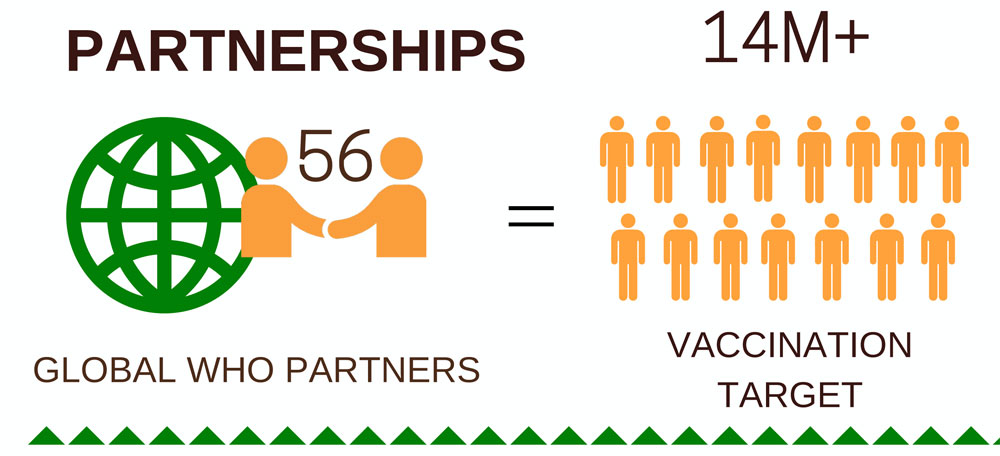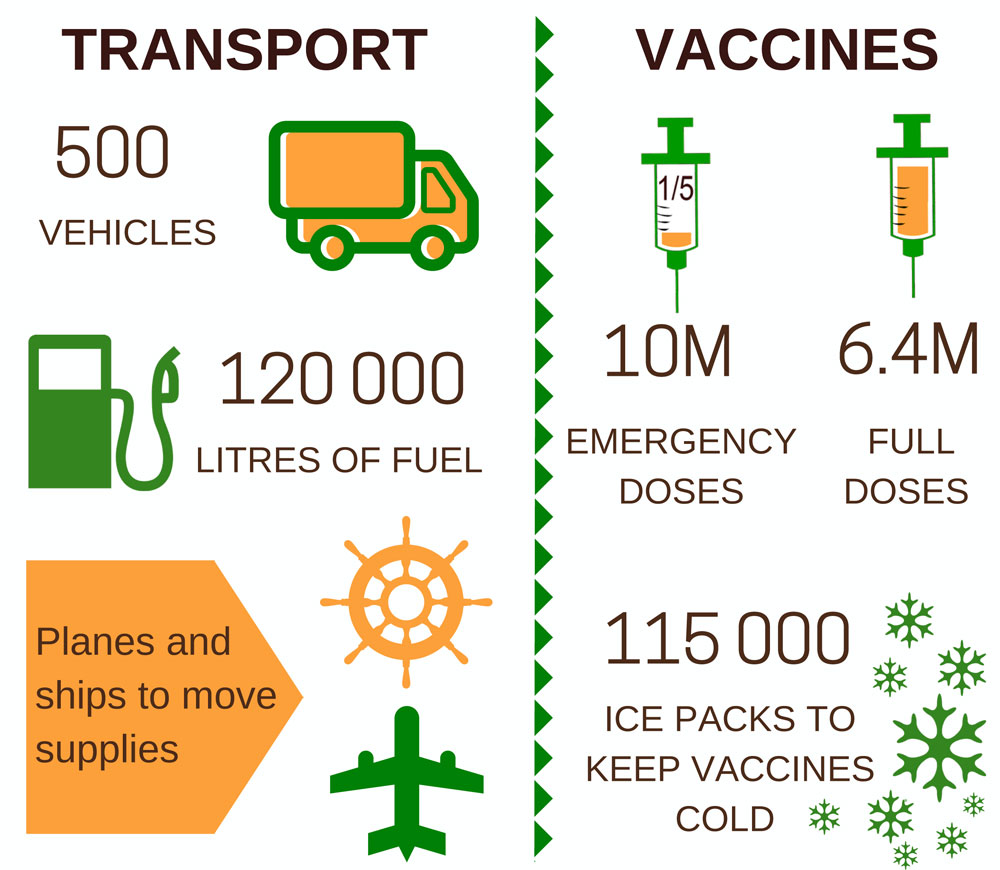Yellow fever: UN coordinating effort to vaccinate 14 million people in two African countries
“Protecting as many people as possible is at the heart of this strategy,” explained William Perea, Coordinator for the Control of Epidemic Diseases Unit of the World Health Organization (WHO) in a press statement. “With a limited supply, we need to use these vaccines very carefully,” he added.
While emergency yellow fever inoculations have been crucial in stemming the outbreak – reaching more than 13 million people in Angola and three million in the DRC – preventive vaccination campaigns are planned for high-risk areas, including the DRC capital of Kinshasa and the country’s 2,646 km border with Angola.
WHO is coordinating 56 global partners in more than 8,000 locations. The yellow fever outbreak has found its way to dense, urban areas and hard-to-reach border regions, making planning for the vaccination campaign especially complex.
These preventive campaigns aim to protect high-risk populations and avert the potential spread and expansion of the current outbreak.
“Kinshasa has more than 10 million people, with only two million already vaccinated against yellow fever,” the statement said. “With local transmission of the virus and low immunity in the population, there is a potential risk that the deadly outbreak could spread to other urban areas.”
Amidst limited vaccination supplies and only a six-month minimum manufacturing process, WHO has been working with the Ministries of Health to plan the campaign using one-fifth of the standard vaccine dose, known as fractional dosing, as a short-term emergency measure to reach as many people as possible.
Fractional dosing was recommended by WHO’s Strategic Advisory Group of Experts on Immunization after it reviewed existing evidence that demonstrated lower doses would protect people safely and effectively against the disease for at least 12 months, and likely much longer. While the fractional dose prohibits international travel, it protects people from yellow fever during the outbreak and contains the disease from spreading further.
The mass vaccination campaign
WHO has been working closely with its partners – the UN Children’s Fund (UNICEF), Médecins sans Frontières (MSF) and the International Federation of the Red Cross (IFRC) – on complex campaign planning and logistics.
Since January, the Global Alliance for Vaccines has already enabled these countries to access almost 19 million doses of the vaccine and continues to provide strong support to the upcoming campaigns. Other partners providing expertise and support include Save the Children and the United States Centers for Disease Control.
While it usually takes from three to six months to plan a massive vaccination campaign, this emergency operation must occur quickly to end transmission before the rainy season starts in September.
“In order to vaccinate roughly eight million people in Kinshasa within a short period, each team will need to vaccinate hundreds of people per day,” said Mr. Perea.
The UN health agency underscored that approximately 17.3 million syringes and 41,000 health workers and volunteers were needed for the campaign.
According to the WHO statement, more than 500 vehicles will be used to transport the teams and supplies, which will be dispersed across more than 8,000 vaccination sites in Kinshasa and along the Angola-Democratic Republic of the Congo border.
The fractional dose campaign in Kinshasa hinges on the availability of vaccines donated by the Brazilian government and manufactured by Bio-Manguinhos, the Immunobiological Technology Institute. It also requires the purchase and shipment of 10 million specialized 0.1ml syringes to ensure the right amount is used for every vaccination.
The UN agency developed guidance and materials to train thousands of health workers and volunteers prior to the campaign – with those in Kinshasa needing specific instructions on how to vaccinate people using the fractional dose.





